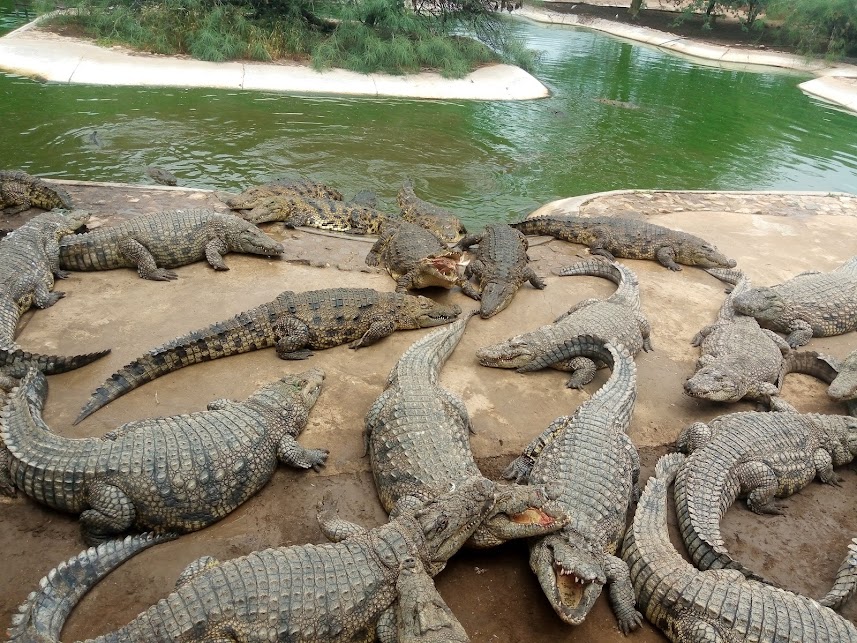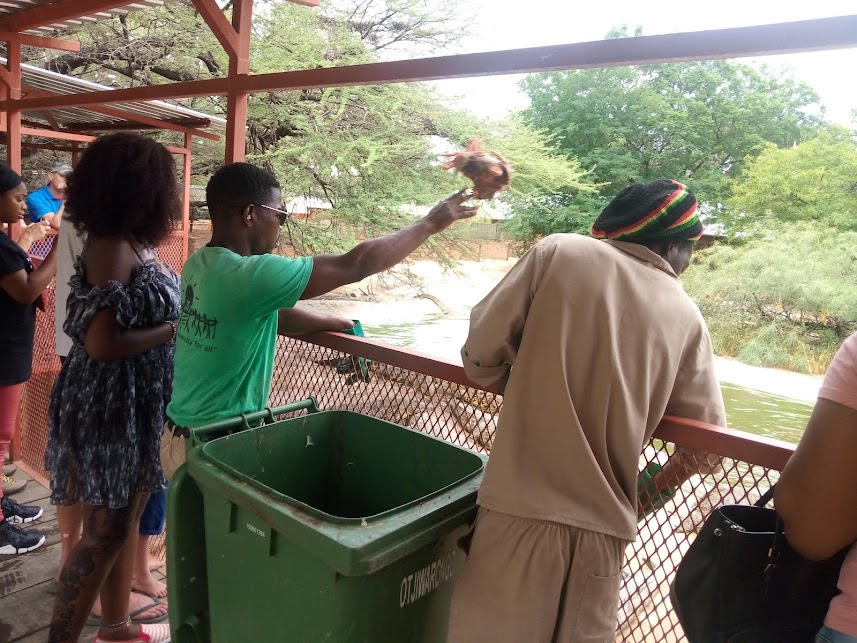Touring, tasting crocodile meal at Otjiwarongo
Posted on: February 6, 2024, by : uguru okoriehe tour guide was a little apprehensive as he quickly shepherded our tour team in the Mercedes Benz bus that was already waiting at the entrance of Hilton Windhoek Hotel. It was a few minutes after 9 am. The destination was the Otjiwarongo Crocodile Farm in the north central area of Namibia. The journey is close to 230 kilometres from Windhoek, the Namibian capital. It would take close to three hours to make it to the crocodile farm.
Here was the issue: the challenge was not getting to Otjiwarongo on this Saturday; it was getting there at the right time to witness the feeding of the large crocodile population of the farm. According to the guide, the crocodiles were fed only once a week, and that usually takes place on Saturdays. This means if the tour team departs late and misses their feeding, they would have to wait for another week to see the spectacle. We had no such luxury. The arrival of the tour team from Nigeria had been timed to coincide with the Saturday feeding day of the crocodiles.
The bus headed north, and negotiated its way through the streets of Windhoek with little difficulty. Windhoek with its low population was a pleasure to navigate through. It seems traffic jams in Windhoek are non-existent. The bus made its way into the B1 international highway and headed to Otjiwarongo. B1 international highway cuts through Namibia into Angola in the north. It is like most Namibia roads, they are single lanes but well maintained. There was little traffic except for tourists who had hired vans, we learned from South Africa, to tour Namibia and even get to Angola and other neighbouring countries. From the bus, the road stretched out many kilometres ahead. On both sides of the road, the land has been carved into private farmlands. Occasionally, one could see baboons and impalas roaming freely in these farmlands. There is nothing special about sighting wild animals in Namibia. They are part of everyday life.
After about three hours, the tour team got to Otjiwarongo, a modest town of about 28,000 inhabitants in the Otjozondjupa Region, north-central Namibia. It is beautiful and neat. Also like most parts of Namibia, life moves at a rather slow, unhurried pace.
Otjiwarongo is one of Namibia’s towns with a large population of German-speaking people. German influence is also evident in its Germanic buildings. However, they mostly communicate in the English language.
The Otjiwarongo Crocodile Farm is not exactly inside the main town but it is in an area with shopping malls and arts and craft shops for tourists to make purchases. A staff of the farm came to meet us and told us to hurry, as the feeding of the crocodile was about to commence. It was already midday. The payment for the gate pass was quickly made and we hurried to the crocodiles’ abode.
The tour team was led to the top of a metal elevation of about 15 feet. Already, plastic drums filled with chickens were positioned on the metal elevation. There were other tourists gathered and waiting for the feeding to commence. Looking below, some of the biggest Nile crocodiles one had ever seen were lumbering close to the foot of the metal elevation. They seemed to have smelt flesh. Not having been fed for one week, they were hungry. Close to 70 crocodiles were milling around and waiting for food. While the younger ones were more active, the older ones simply lumbered around the water pond in their sanctuary, too weak to hustle for food.
The feeding involved picking one whole processed chicken and throwing it into the pit. The more agile ones swung and caught the chicken even before it landed. The crocodiles were not gluttonous. Once one got a whole chicken, it would leave for a secluded area to eat. The person feeding them made efforts to throw the chicken to the older crocodiles at the back that could not fight for food. The oldest crocodile is said to be about 100 years old.
The crocodile farm was built in 1985 for conservation, tourism, and recreational purposes. It is a major tourist attraction in Namibia. The crocodile farm started with 60 adult Nile crocodiles, and has expanded and become successful in breeding crocodile farms in Namibia.
The crocodiles are bred and kept in different departments. The crocodile pit has old crocodiles kept for touristic purposes. They also help in breeding. Crocodiles in this section are not killed but are kept for tourists to come and see.
There is a section where the crocodiles are bred for commercial purposes. The meat is extracted for food while the skin is used for bags, belts and other items. The crocodiles are bred in this section and once they are old enough they are killed for their skin and food.
There is also the hatchery. Here visitors could see the eggs of the crocodiles before they hatch. The crocodile eggs are just like normal bird eggs but a little bigger.
At the hatchery that Saturday, there were also tiny infant crocodiles that had just hatched. There is little difference between them and lizards, only that they grow to be much bigger than the lizard, and of course very dangerous. They can also live for many years.
Also at the hatchery, visitors are allowed to hold the tiny crocodiles that are normally a few days old. There is also a shop within the premises where crocodile skin items like bags, belts, earrings, slippers, shoes, and other items made from by-products of crocodiles are sold. Prices for these products range from 20 dollars to above 100 dollars. They don’t come cheap.
The last port of call was the restaurant called Bitten. It is leafy and tranquil with running water giving it a serene ambience. Although other delicacies are served, savouring crocodile meals is a specialty in the restaurant.
It is something many look forward to seeing when visiting the farm. The group had a meal made from crocodile Namib.




